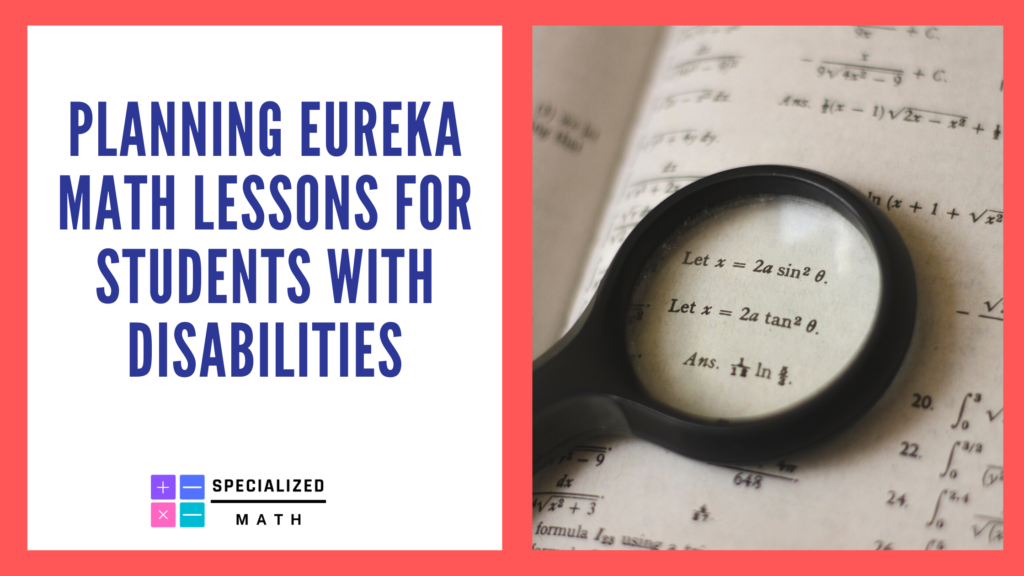Eureka Math can be a solid curriculum choice for teaching math to students with math disabilities. We have already looked at how to plan around the Modules and Topics in Eureka Math. Now we are going to review how to plan for the implementation of specially designed instruction within Eureka math.
Lesson Overview
The first thing we want to do is read the Lesson Overview. This will tell you the structure of the lesson as well as the methods used for instruction. What is nice about Eureka is that each day follows the same lesson structure, so teachers and students know what to expect. While reading the Lesson Overview we want to recall how the concepts build upon what has been previously taught.
Fluency
Next, we want to ready through the fluency portion. This is a portion that you will probably want to modify for you students with math disabilities if they have goals and services in calculation. Many of the sprints and fluency exercises included in Eureka can be overwhelming for our students.
Questions that we may want to consider as we review the fluency portion: Can we take a few problems so that students can demonstrate mastery within the short period of time? Does it make sense to give a student a sprint covering multiplication when they haven’t even mastered single digit addition facts?
If the goal is for the student to see patterns, would it make sense to provide a calculator for the fluency portion to expose them to grade level, but then give then also provide them with a sprint that aligns to their IEP goals during small group?
Application Problem
Review the application problem. Think about the problem is asking the student to apply their previous learning. Are there any concepts or skills that you will need to review prior to diving to the problem as it is written?
Concept Development
This is typically the meat of the lessons and usually takes up the majority of the instructional time. Take a look at how the problems build over the lesson. How does the problem set support the concepts that are taught during this time? This is also an area where we may want to provide modifications or scaffolds. Do we need to provide every problem in the problem set? Can we chunk the problem set so that students can be more successful?
Student Debrief
The student debrief is the opportunity to close the lesson with a whole group discussion. This is also an important way for students with math disabilities to build confidence. It helps to hear from their peers and students may be more comfortable sharing their thoughts verbally. This is where a special education teacher may want to prepare scaffolded questions for students who may require additional support.
Exit Ticket
Just as with the problem set, it is important to review the exit ticket. This is also a time where we may want to adapt the problem so that all students can have an entry point. Do I need to provide a process chart to support multi-step problems? Do I need to simplify the directions?
With a little careful thought and planning, Eureka can be an awesome way to meet the needs of students with math difficulties. It is just important that we meet our students where they are and provide the bridge needed for them to be successful with grade level math content.
Click here to learn receive a FREE copy of a Eureka Math Module Planner to support with your planning.
Click here to receive a FREE copy our Eureka Math Module Planner to support with your planning.

